Vlookup Evaluates To An Out Of Bounds Range
Understanding the Concept of VLOOKUP in Excel
VLOOKUP stands for vertical lookup, which means it searches for a value in the leftmost column of a table and retrieves data from a specified column in the same row. Its syntax is as follows:
=VLOOKUP(lookup_value, table_array, col_index_num, [range_lookup])
The lookup_value is the value to be searched, table_array is the range of cells where the table is located, col_index_num is the column number from which the data should be retrieved, and range_lookup is an optional argument that specifies whether an exact match is required or not.
Overview of a Typical VLOOKUP Formula
A typical VLOOKUP formula looks like this:
=VLOOKUP(A2, Sheet2!$A$2:$B$10, 2, FALSE)
In this example, A2 is the lookup value, Sheet2!$A$2:$B$10 is the table array where the data is located, 2 specifies that the data should be retrieved from the second column, and FALSE indicates that an exact match is required.
Defining the Out of Bounds Range Error in VLOOKUP
When VLOOKUP evaluates to an out of bounds range, it means that the search value falls outside the range of the leftmost column in the table array. This error occurs when the lookup value is smaller than the smallest value in the leftmost column or larger than the largest value in the leftmost column.
Possible Causes of VLOOKUP Evaluating to an Out of Bounds Range
The out of bounds range error in VLOOKUP can occur due to various reasons, including:
1. Incorrect lookup value: If the lookup value does not exist in the leftmost column of the table array, VLOOKUP will evaluate to an out of bounds range.
2. Unsorted data: VLOOKUP requires the leftmost column of the table array to be sorted in ascending order. If the data is unsorted, the function may produce incorrect results or evaluate to an out of bounds range.
3. Mismatched data types: If the lookup value and the values in the leftmost column of the table array have different data types (e.g., text vs. number), VLOOKUP may evaluate to an out of bounds range.
4. Incorrect table array range: Ensuring that the table array range is correctly specified is crucial. Accidentally selecting a range that does not include the leftmost column can lead to the out of bounds range error.
How to Identify if VLOOKUP is Evaluating to an Out of Bounds Range
When VLOOKUP evaluates to an out of bounds range, it will return the #VALUE! error in the cell where the formula is located. This error indicates that the lookup value is not found within the range of the leftmost column of the table array.
Common Mistakes that Lead to the Out of Bounds Range Error
Some common mistakes that may result in the out of bounds range error in VLOOKUP include:
1. Using an incorrect lookup value: Double-checking the lookup value and ensuring it matches the values in the leftmost column is essential.
2. Incorrect sorting of data: Ensure that the leftmost column of the table array is sorted in ascending order for VLOOKUP to work accurately.
Troubleshooting Techniques for Resolving the Out of Bounds Range Error
To troubleshoot and resolve the out of bounds range error in VLOOKUP, you can follow these techniques:
1. Check for correct syntax and parameters in the VLOOKUP formula: Verify that the formula is correctly structured, and the arguments are entered in the right order.
2. Adjust the lookup range to prevent the out of bounds range error: Make sure the lookup range includes the leftmost column of the table array entirely.
3. Use alternative formulas or functions to avoid the out of bounds range issue: Depending on your data and requirements, you can try using alternative formulas like INDEX-MATCH or database functions like DSUM.
HLOOKUP out of Bounds Range, Pivot Evaluates to an Out of Bounds Range in Google Sheets
Similar to VLOOKUP, HLOOKUP is a function in Excel that performs a horizontal lookup. It searches for a value in the top row of a table and retrieves data from a specified row in the same column. The out of bounds range error can also occur in HLOOKUP if the lookup value falls outside the range of the top row.
In Google Sheets, the pivot table evaluates to an out of bounds range when the data source range does not include the lookup values used by the pivot table. To resolve this issue, ensure that the pivot table’s data source range includes all the lookup values.
Function VLOOKUP Parameter 3 Expects Number Values
The col_index_num argument in VLOOKUP expects a number to specify the column from which the data should be retrieved. If a non-numeric value is entered, such as text or a cell reference with text, the function will evaluate to an out of bounds range error.
VLOOKUP Returns N/A or Wrong Value
If VLOOKUP returns #N/A, it means that the lookup value is not found in the leftmost column of the table array. This error can occur if the lookup value is misspelled or if it is not present in the data. Double-check the accuracy of the lookup value and ensure it matches the values in the leftmost column.
If VLOOKUP returns a wrong value, it may be due to incorrect sorting, mismatched data types, or an incorrect col_index_num argument. Verify the sorting of the data, ensure the data types match, and check that the col_index_num argument accurately points to the desired column.
Lookup Evaluates to an Out of Range Row Value
When lookup evaluates to an out of range row value, it means that the search value falls outside the range of rows in the table array. This error may occur when the lookup value is smaller than the smallest value in the top row or larger than the largest value in the top row.
Did Not Find Value in VLOOKUP Evaluation
If VLOOKUP did not find the value in the evaluation, it means that the lookup value does not exist in the leftmost column of the table array. Ensure the accuracy of the lookup value and cross-check it with the data in the leftmost column.
In conclusion, the out of bounds range error in VLOOKUP can be frustrating but can be resolved by carefully analyzing the possible causes and following troubleshooting techniques. Double-checking the lookup value, verifying data sorting, and adjusting the lookup range are crucial steps in resolving this error. By understanding and resolving this error, users can ensure the accurate retrieval of data using VLOOKUP and enhance their data analysis capabilities in Excel.
Vlookup Evaluates To An Out Of Bounds Range In Google Sheets
What Are The Range Limitations For Vlookup?
VLOOKUP is a powerful and widely used function in Microsoft Excel that allows users to search for and retrieve data from a table. It is a versatile tool that helps streamline data analysis and processing tasks. However, like any other software feature, VLOOKUP also has its limitations. In this article, we will explore the range limitations for VLOOKUP and delve into the reasons behind them.
Before discussing the limitations, let’s briefly explain how VLOOKUP works. The function takes four main arguments: lookup_value, table_array, col_index_num, and range_lookup. The lookup_value is the value you want to search for, the table_array is the range of cells that contain the data, col_index_num is the column number in the range from which you want to retrieve the data, and range_lookup determines whether you want an exact match or an approximate match.
The primary range limitation for VLOOKUP is that it can only search within a single column. This means that the table_array argument must be a vertical range of cells, with the lookup_value residing in the leftmost column of the range. However, it is important to note that VLOOKUP can retrieve data from any column within the specified range.
Another limitation of VLOOKUP is that it can only search for values in the first column of the table_array. This restriction means that if your lookup_value is not located in the leftmost column of the table, VLOOKUP will not be able to find it. To overcome this limitation, you can either rearrange your data so that the lookup_value is in the first column or consider using other functions like INDEX and MATCH, which offer more flexibility in terms of the search column.
Additionally, VLOOKUP can only search for exact matches by default. This limitation can be a hindrance when dealing with datasets that contain typographical errors, leading or trailing spaces, or inconsistent formatting. To perform approximate matches, you need to set the range_lookup argument to TRUE. However, when using approximate matches, the table_array must be sorted in ascending order based on the values in the leftmost column. Failure to do so will corrupt the results and lead to incorrect data retrieval.
Furthermore, one important range limitation to consider is that VLOOKUP has a maximum of 1048576 rows that can be used in the table_array argument. This means that if the lookup_value exceeds this row limitation, VLOOKUP will not be able to find it. Similarly, if your range exceeds this row limitation, you will not be able to retrieve the data accurately. In such cases, alternative methods or custom coding may be necessary to achieve the desired results.
Lastly, it is crucial to mention that VLOOKUP does not work well with empty cells or cells containing errors in the table_array. During the search process, VLOOKUP ignores these cells, resulting in incomplete or inaccurate data retrieval. Therefore, it is recommended to ensure that your data is clean and does not contain any empty cells or errors before using the VLOOKUP function.
In conclusion, while VLOOKUP is undoubtedly a versatile and powerful tool for data retrieval in Excel, it does have certain limitations. The main range limitations include the requirement of a single column range, the inability to search beyond the first column, the need for exact matches or sorted ranges for approximate matches, the maximum number of rows in the table_array, and the inability to handle empty cells or cells with errors effectively. Being aware of these limitations allows users to work around them or explore alternative solutions when necessary.
FAQs:
Q: Can VLOOKUP search in multiple columns?
A: No, VLOOKUP can only search within a single column. However, it can retrieve data from any column within the specified range.
Q: How can I perform a lookup in a table where the lookup_value is not in the first column?
A: You can either rearrange your data so that the lookup_value is in the first column or consider using functions like INDEX and MATCH together to achieve the desired result.
Q: Can VLOOKUP search for approximate matches?
A: Yes, by setting the range_lookup argument to TRUE, VLOOKUP can perform approximate matches. However, the table_array must be sorted in ascending order based on the values in the leftmost column for accurate results.
Q: What happens if the lookup_value exceeds the maximum number of rows in the table_array?
A: If the lookup_value exceeds the maximum number of rows (1048576) allowed in the table_array, VLOOKUP will not be able to find it.
Q: How does VLOOKUP handle empty cells or cells with errors in the table_array?
A: VLOOKUP ignores empty cells and cells with errors during the search process, which can result in incomplete or inaccurate data retrieval. It is recommended to ensure data cleanliness before using the VLOOKUP function.
How To Use Vlookup With Importrange?
VLOOKUP is a powerful tool in Google Sheets that allows users to find and retrieve specific data from a table. When combined with Importrange, a function that allows data from multiple sheets to be imported into one, it becomes even more useful. In this article, we will dive into the details of how to use VLOOKUP with Importrange effectively to enhance your data analysis capabilities. Additionally, we will address some frequently asked questions about these functions. So let’s get started!
Overview of VLOOKUP and Importrange:
Before we explore their combined use, let’s have a brief overview of VLOOKUP and Importrange individually.
VLOOKUP is a function that searches for a value in the leftmost column of a table and returns a corresponding value from another column. It works by using a reference value to find the desired data and retrieve information associated with it.
Importrange, on the other hand, is a function that allows you to import data from one Google Sheets document into another. It helps in combining or consolidating data from different sheets, making it easier to analyze and manage.
Using VLOOKUP with Importrange:
To use VLOOKUP with Importrange, follow these steps:
Step 1: Open your destination Google Sheets document, where you want to import and analyze the data.
Step 2: Determine the range of the source data from the original document using Importrange. The format of the Importrange function is as follows:
=importrange(“URL”,”SheetName!Range”)
Replace “URL” with the URL of the original document and “SheetName!Range” with the specific sheet and range you want to import. Make sure to grant access to the original document for successful data import.
Step 3: Once the data is imported into your destination sheet, you can start using VLOOKUP to retrieve specific information. The VLOOKUP formula has the following structure:
=vlookup(search_key, range, index, is_sorted)
– “search_key” is the value you want to search for within the range.
– “range” is the imported data range where you want to search for the value.
– “index” is the column number from which you want to retrieve the information.
– “is_sorted” (optional) determines whether the data range is sorted or not. Set it to TRUE for approximate matches and FALSE for exact matches.
Step 4: Replace the respective parameters in the VLOOKUP formula with your imported data and desired values to complete the formula. You can drag the formula down the spreadsheet to apply it to multiple rows, adapting it to your analysis needs.
FAQs:
Q1. Can I use VLOOKUP with Importrange across multiple sheets?
A1. Yes, you can use VLOOKUP with Importrange to import data from multiple sheets into one. Simply adjust the “SheetName!Range” parameter in the Importrange function to include multiple sheet names and ranges.
Q2. Is it possible to use VLOOKUP with Importrange from another Google account or external sources?
A2. No, Importrange can only fetch data from other sheets within the same Google account. It does not support importing data from external sources or accounts.
Q3. How do I handle errors when using VLOOKUP with Importrange?
A3. Errors may occur when the VLOOKUP formula cannot find the requested value or if there are inconsistencies within the range. To handle errors, you can wrap the VLOOKUP formula within the IFERROR function. Here’s an example:
=iferror(vlookup(search_key, range, index, is_sorted), “Not found”)
Q4. Is VLOOKUP case-sensitive when used with Importrange?
A4. By default, VLOOKUP is not case-sensitive. However, if you want to perform a case-sensitive search, you can use the EXACT function within the VLOOKUP formula. For instance:
=vlookup(“search_key”, arrayformula(if(exact(range, “search_key”), “ColumnMatchedValue”)), index, is_sorted)
Conclusion:
By combining VLOOKUP and Importrange functions in Google Sheets, you can unlock a new level of data analysis and manipulation. Whether you want to consolidate information from multiple sheets or retrieve specific data from large datasets, this powerful duo will assist you. Remember to carefully follow the steps outlined in this guide and leverage the FAQs for any additional queries. Happy data analysis!
Keywords searched by users: vlookup evaluates to an out of bounds range hlookup out of bounds range, pivot evaluates to an out of bounds range google sheets, function vlookup parameter 3 expects number values, VLOOKUP return N/A, Vlookup wrong value, lookup evaluates to an out of range row value, did not find value in vlookup evaluation
Categories: Top 58 Vlookup Evaluates To An Out Of Bounds Range
See more here: nhanvietluanvan.com
Hlookup Out Of Bounds Range
Excel is a powerful tool that offers a myriad of functions to manipulate and analyze data. One such function is HLOOKUP, which stands for horizontal lookup. HLOOKUP allows users to search for a value in the top row of a table and retrieve the corresponding value from a specific row within that table. While HLOOKUP is a useful function, it is not without its pitfalls. One common issue that users encounter is the dreaded “Out of Bounds Range” error. In this article, we will delve into the details of HLOOKUP, explore the reasons behind the out of bounds range error, and provide some tips and tricks to avoid it.
Understanding HLOOKUP
To understand the out of bounds range error, let’s first take a closer look at how HLOOKUP works. The HLOOKUP function follows the syntax =HLOOKUP(lookup_value, table_array, row_index_num, [range_lookup]). Here’s a brief explanation of each parameter:
1. Lookup_value: This is the value you want to search for in the top row of the table.
2. Table_array: This is the range of cells that represents the entire table.
3. Row_index_num: This specifies the row number from which you want to retrieve the corresponding value.
4. Range_lookup: This parameter is optional and can be either TRUE or FALSE. When set to TRUE or omitted, HLOOKUP looks for an approximate match, while FALSE forces an exact match.
Once you have a good grasp of how HLOOKUP functions, let’s examine the common reasons behind the out of bounds range error.
Causes of the Out of Bounds Range Error
The out of bounds range error occurs when the row_index_num parameter in the HLOOKUP formula is set to a value that exceeds the number of rows in the table_array. In simpler terms, it means you are trying to retrieve a value from a row that doesn’t exist in the specified table. This error often arises due to the following reasons:
1. Incorrect row_index_num: Double-check whether the row_index_num corresponds to a valid row within the table_array. If the value is greater than the number of rows, it will trigger the out of bounds range error.
2. Empty rows or missing data: It’s crucial to ensure that your table_array contains continuous and non-empty rows. If there are any missing rows or cells within the specified range, it can lead to out of bounds range errors.
3. Sorting issues: If you have sorted your data after creating the HLOOKUP formula, the order of rows might change, resulting in an out of bounds range error.
4. Moving referenced cells: When copying or moving a HLOOKUP formula to a different location, make sure to adjust the references accordingly. If you move the formula to a location that exceeds the range of the original table, it will trigger the error.
Avoiding the Out of Bounds Range Error
Now that we understand the reasons behind the out of bounds range error let’s explore some tips to avoid encountering this issue in your Excel spreadsheets:
1. Double-check row_index_num: Ensure that the row_index_num parameter in your HLOOKUP formula is valid and does not exceed the number of rows within the table_array.
2. Validate data and ensure continuity: Before applying the HLOOKUP function, check for any missing or empty rows within the table_array range. Fill in missing or empty cells to maintain continuous data.
3. Avoid sorting after creating the HLOOKUP: If you intend to sort your data, it’s best to do it before you create the HLOOKUP formula. This way, you won’t disrupt the order of rows and avoid the out of bounds range error.
4. Be cautious when moving or copying HLOOKUP formulas: When you move or copy a HLOOKUP formula, remember to update the references to the table_array accordingly. Failing to do so will result in referencing a table range that is out of bounds.
HLOOKUP Out of Bounds Range FAQs
1. What does the “Out of Bounds Range” error mean?
The “Out of Bounds Range” error occurs in Excel when you use the HLOOKUP function to search for a value in a table, and the specified row number exceeds the number of rows within the table.
2. How can I fix the out of bounds range error in HLOOKUP?
To fix the out of bounds range error, ensure that the row index number parameter is within the range of rows in your table. Additionally, check for missing or empty rows, avoid sorting your data after creating the HLOOKUP, and update references when moving or copying formulas.
3. Can the out of bounds range error occur with other lookup functions?
No, the out of bounds range error is specific to the HLOOKUP function, which looks up values horizontally in a table. Other lookup functions, such as VLOOKUP, INDEX MATCH, and XLOOKUP, have different error messages for similar issues.
4. Is it possible to suppress the out of bounds range error in HLOOKUP?
Unfortunately, Excel does not provide an option to suppress specific error messages like the out of bounds range error. Your best approach would be to avoid the error by following the tips mentioned above.
Conclusion
HLOOKUP is a valuable function in Excel that allows users to retrieve specific values from a table based on a lookup value. However, users often encounter the out of bounds range error, which occurs when the specified row number is invalid or exceeds the number of rows in the table. By understanding the causes behind this error and implementing the suggested tips, you can avoid the out of bounds range error in your HLOOKUP formulas and leverage this function effectively in your data analysis and calculations.
Pivot Evaluates To An Out Of Bounds Range Google Sheets
Understanding the Error Message: What Does “Pivot evaluates to an out of bounds range” Mean?
When you create a pivot table in Google Sheets, you specify a range of data that you want to analyze. This range acts as the input for the pivot table. The error message “Pivot evaluates to an out of bounds range” occurs when the pivot table tries to access data outside the defined range.
Causes of the Error Message:
1. Expanding or shrinking the source data range: If you modify the source data range after creating the pivot table, it may lead to the “Pivot evaluates to an out of bounds range” error. This can occur when you add or remove rows or columns that were included in the initial range.
2. Deleting or modifying cells within the source data range: If you delete or modify cells within the source data range, the pivot table may reference cells that no longer exist or have changed, triggering the error.
3. Filtering or sorting the source data: Filtering or sorting the source data may change the row or column positions, causing the pivot table to evaluate data outside the defined range.
4. Merging cells within the source data range: Merging cells within the range of data used by the pivot table can cause this error. Merged cells can disrupt the reference integrity, leading to out of bounds range evaluations.
Resolving the Error “Pivot evaluates to an out of bounds range”:
1. Review the source data range: Ensure that you haven’t modified the source data range in a way that exceeds the initial range. Remove any unnecessary rows or columns and make sure the range covers all the data you want to analyze.
2. Check for deleted or modified cells: Verify that you haven’t deleted or modified any cells within the source data range. Restoring or correcting the cells may resolve the error. If necessary, recreate the pivot table after making the corrections.
3. Avoid filtering or sorting the data: If you need to filter or sort your data, do it after creating the pivot table. Modifying the data after the pivot table has been generated can lead to the out of bounds range error.
4. Unmerge cells: If you have merged cells within the source data range, unmerge them. Merged cells can disrupt the pivot table’s references.
Frequently Asked Questions (FAQs):
Q1: Why am I getting the “Pivot evaluates to an out of bounds range” error even though my source data range is correct?
A1: The error may occur if you’ve added or removed data outside the original range used by the pivot table, even if it’s not within the current source data range. Double-check the entire worksheet for any changes that might affect the range.
Q2: Can I modify my pivot table without encountering this error?
A2: Yes, you can modify your pivot table without encountering the error by following some best practices. Avoid modifying the source data range, deleting or modifying cells within the range, filtering or sorting the data, or merging cells within the range.
Q3: What happens if I ignore or dismiss the error message?
A3: If you dismiss the error message without addressing the underlying issue, the pivot table may not display accurate results or may not function correctly. It’s crucial to resolve the error to ensure the integrity of your data analysis.
Q4: Can I recover my pivot table if I encounter this error?
A4: If you encounter the “Pivot evaluates to an out of bounds range” error, you can try to recover your pivot table by fixing the causes mentioned earlier. In some cases, recreating the pivot table from scratch may be the most effective solution.
Q5: Are there any limits to the size of the source data range in a pivot table?
A5: Google Sheets has certain limitations, including the number of cells a worksheet can contain. If your source data exceeds these limits, you may need to consider dividing your data into multiple smaller ranges or using another data analysis tool.
In conclusion, the “Pivot evaluates to an out of bounds range” error in Google Sheets is typically triggered when the pivot table tries to access data outside the defined range. This error can be resolved by carefully reviewing and ensuring the integrity of the source data range, avoiding modifications that extend beyond the original range, and removing any merged cells. By following these steps and best practices, users can effectively resolve this error and continue leveraging the power of pivot tables in Google Sheets for data analysis.
Function Vlookup Parameter 3 Expects Number Values
When it comes to analyzing and manipulating data in Excel, one essential function that often comes into play is VLOOKUP. VLOOKUP, short for vertical lookup, is a powerful tool that enables users to search for specific values in a vertical column and retrieve corresponding data from adjacent columns. While there are several parameters that need to be considered when using the VLOOKUP function, parameter 3 specifically expects number values. In this article, we will delve into the significance of parameter 3, its requirements, and how to effectively use it in Excel. So, let’s dive right in!
Understanding VLOOKUP Parameters:
Before we discuss the importance of parameter 3, let’s take a quick look at all the parameters of the VLOOKUP function:
=VLOOKUP(lookup_value, table_array, col_index_num, [range_lookup])
– Lookup_value: This is the value you want to search for within the first column of the table_array. It could be a number, text, or even a cell reference.
– Table_array: This refers to the range of cells that contains the data from which you want to retrieve information. The leftmost column of the range should contain the lookup value.
– Col_index_num: This parameter specifies the column number from which you want to retrieve the result. The leftmost column is considered as 1, the next column as 2, and so on.
– Range_lookup: This is an optional parameter that determines whether you want an exact match or an approximate match. If omitted, Excel assumes an approximate match, where the closest match will be returned.
The Importance of Parameter 3:
Parameter 3, also known as col_index_num, plays a crucial role in the VLOOKUP function. It specifies the column number from which you want to extract the corresponding value. This parameter expects a numeric value, representing the column position in the table array. For example, if col_index_num is set to 2, it means that the returned value will be taken from the second column of the table array.
Why Does Parameter 3 Expect Number Values?
The reason why parameter 3 expects number values is that it serves as a reference to indicate the column position within the table array. By using numbers, users can precisely specify the desired column. This allows the VLOOKUP function to effectively retrieve the corresponding values. Specifying a column with a number is more precise and less prone to errors than using alphabetic letters.
Using Parameter 3 Effectively:
To make the most out of parameter 3, it is essential to understand how it works and use it correctly. Here are some tips to help you use parameter 3 effectively:
1. Ensure the table array is accurate: Double-check that the table array range you select covers the entire data set you need to search within. Verify that the leftmost column of the range contains the lookup value.
2. Specify the correct column number: It is crucial to specify the accurate column number in parameter 3. Remember, the leftmost column is counted as 1, the next column as 2, and so on. Be mindful of which column holds the desired data you want to retrieve.
3. Lock the range using absolute cell references: If you plan to copy the VLOOKUP formula to other cells, consider using absolute cell references for the table array. This ensures that the range remains fixed when the formula is copied, preventing any unexpected errors.
4. Utilize named ranges: If you’re dealing with large datasets or frequently using the same table array, assigning a named range to the data can simplify the VLOOKUP formulas significantly. Named ranges eliminate the need to manually select the range every time you use the function, saving you time and effort.
FAQs:
Q1. Can I use letters instead of numbers in parameter 3?
No, parameter 3 specifically expects a numeric value. Using letters or any other type of non-numeric references will result in an error.
Q2. Can I use negative values for col_index_num?
Yes, you can use negative values. For instance, -1 refers to the leftmost column in the table array, -2 refers to the column to its left, and so on. This can be handy when you need to retrieve data from columns positioned to the left of the lookup column.
Q3. What happens if I specify a column number that exceeds the number of columns in the table array?
If the specified col_index_num is greater than the number of columns in the table array, Excel will return the #REF! error, indicating an invalid reference.
Q4. Can I use cell references instead of a numeric value for parameter 3?
No, cell references won’t work as parameter 3 expects a numeric value representing the column number. Using cell references will return an error.
In conclusion, parameter 3 of the VLOOKUP function is a crucial element that expects number values. By understanding its significance and using it correctly, users can leverage the power of VLOOKUP to search for and retrieve specific values from their data. So, next time you use VLOOKUP, ensure that you provide a proper numeric index for parameter 3 to maximize the effectiveness of this handy Excel function.
Images related to the topic vlookup evaluates to an out of bounds range

Found 34 images related to vlookup evaluates to an out of bounds range theme
![VLOOKUP Evaluates To An Out Of Bounds Range - [FIXED] Vlookup Evaluates To An Out Of Bounds Range - [Fixed]](https://trustedtutorials.b-cdn.net/wp-content/uploads/2022/07/Reason-1-Why-VLOOKUP-Evaluates-To-An-Out-Of-Bounds-Range-Range-is-too-short-1-1024x576.webp)
![VLOOKUP Evaluates To An Out Of Bounds Range - [FIXED] Vlookup Evaluates To An Out Of Bounds Range - [Fixed]](https://trustedtutorials.b-cdn.net/wp-content/uploads/2022/07/VLOOKUP-Evaluates-To-An-Out-Of-Bounds-Range-1-1024x576.webp)


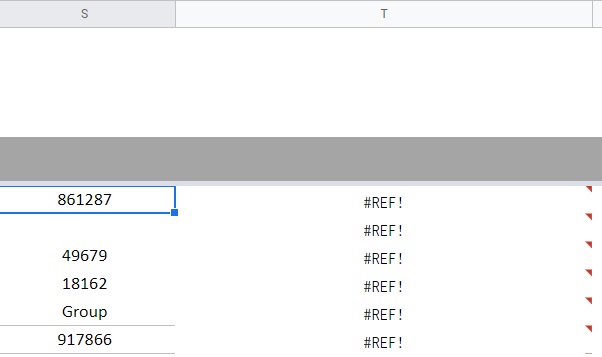
![VLOOKUP Evaluates To An Out Of Bounds Range - [FIXED] Vlookup Evaluates To An Out Of Bounds Range - [Fixed]](https://trustedtutorials.b-cdn.net/wp-content/uploads/2022/07/Why-VLOOKUP-Evaluates-To-An-Out-Of-Bounds-Range-1-1024x576.webp)



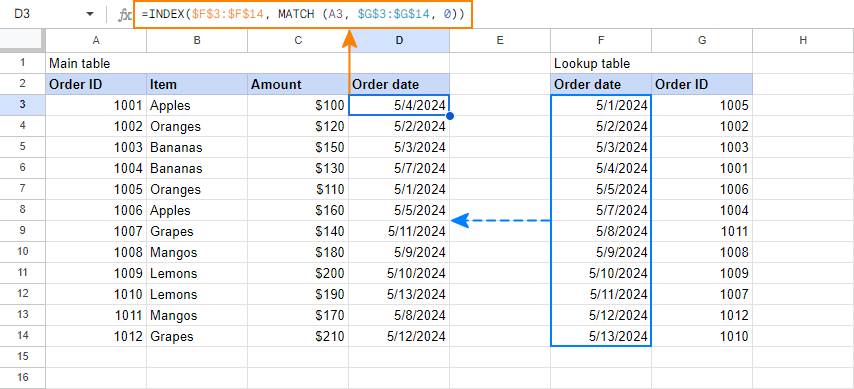
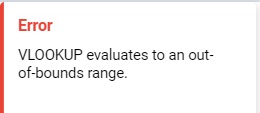

![VLOOKUP Evaluates To An Out Of Bounds Range - [FIXED] Vlookup Evaluates To An Out Of Bounds Range - [Fixed]](https://trustedtutorials.b-cdn.net/wp-content/uploads/2022/07/Why-VLOOKUP-Evaluates-To-An-Out-Of-Bounds-Range-in-Google-Sheets-1024x576.webp)

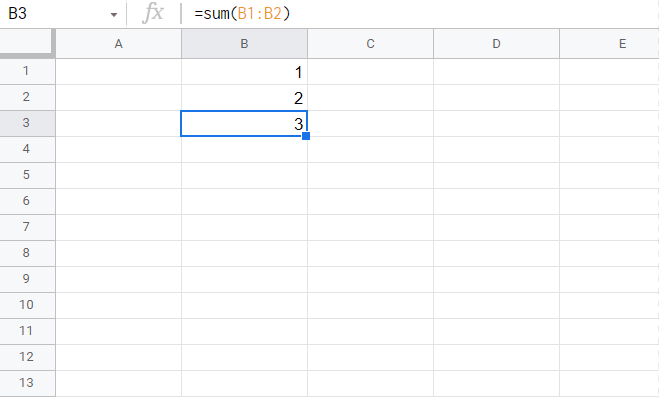
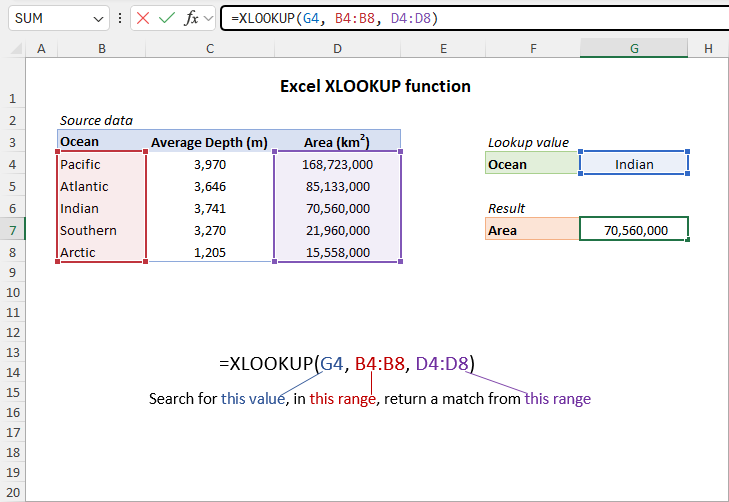

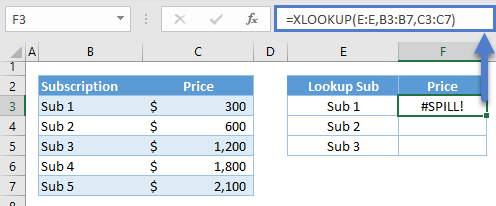
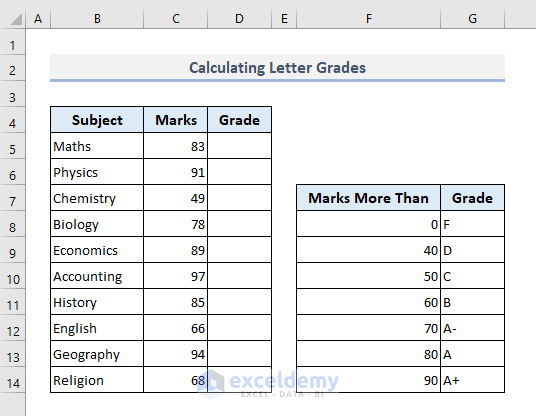
Article link: vlookup evaluates to an out of bounds range.
Learn more about the topic vlookup evaluates to an out of bounds range.
- VLOOKUP Troubleshooting in Google Sheets
- Vlookup Evaluates to an out of bounds range. Not sure how to …
- VLOOKUP and XLOOKUP Limitation – Microsoft Community
- The Ultimate Guide to VLOOKUP in Google Sheets – Coefficient
- How to Use VLOOKUP to Access Information to the Left in Excel
- VLOOKUP with IMPORTRANGE in Google Sheets – Layer Blog
- VLOOKUP Evaluates To An Out Of Bounds Range – [FIXED]
- VLOOKUP Google Sheets Explained | Coupler.io Blog
- What Does Out Of Range Mean In Google Sheets? – The Nina
- VLOOKUP evaluates to an out of bounds range – Stack Overflow
- Những lỗi thường gặp khi viết hàm Vlookup trong Google Sheet
- Vlookup error [“VLOOKUP evaluates to an out of bounds …
- VLOOKUP in Google Sheets with formula examples – Ablebits